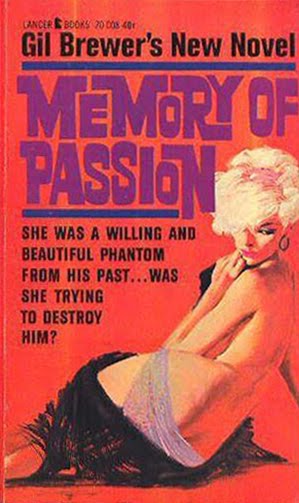
I read the first half of Barry Malzberg’s brilliant book back in the 1980s. It was called Engines of the Night and it stirred up the science fiction world with its criticism of the genre and its publishers. Breakfast in the Ruins: Science Fiction in the Last Millennium consists of Engines of the Night and essays and reviews published since that book. This Baen edition of Breakfast in the Ruins was published in 2007 but reads like it was written yesterday. This book is a feast of insights about science fiction written by a practitioner and an insider. Malzberg delivers a blistering history of science fiction, warts and all. He predicts many of the trends that we’re dealing with now: a declining readership, publishers going bankrupt or merging with other troubled publishers, and the decline of bookstores. With so many great essays, it’s hard to pick out favorites. I loved Malzberg’s essays about Cornell Woolrich, a truly underrated writer. I admired Malzberg’s profile of Mark Clifton, a science fiction writer I need to read more of. And I really enjoyed Malzberg’s tale of writing a men’s action-adventure series under the pseudonym of “Mike Barry.” I just happen to have read all the Mike Barry books (they now reside at SUNY at Buffalo). If you have any interest in science fiction, writing, publishing, and profiles of writers then get your hands on a copy of Breakfast in the Ruins. It’s a forgotten classic!
TABLE OF CONTENTS:
Part One Breakfast in the Ruins: Science Fiction in the Last Millenium
Introduction to the Baen edition 1
Part One Engines in the Night
Introduction to the 2001 electronic edition 7
Introduction to the Original Edition 12
The Number of the Beast 14
L’Etat c’est moi 18
I could Have Been a Contender, Part One 23
Anonymity & Empire 26
I Don’t Know How to Put It Love But I’ll Surely Surely Try 31
Memoir from Grub Street 37
The Fifties 40
The Fifties: Recapitulation and Coda 52
Ah Tempora! Ah Portions! Ah Mores! Ah Outlines! 56
Science Fiction and the Academy: Some Notes 59
At the Divining Edge 63
Some Notes Toward the true and the Terrible 67
Wrong Rabbit 71
John W. Campbell: June 8, 1910 to July 11, 1971 75
The Science Fiction of Science Fiction 80
I Don’t Want Her You Can Have Her 87
Onward and Upward with the Arts, Part II 91
Tell Me Doctor If You Can That It’s Not All Happening Again 94
The Richard Nixon John B. Mitchell Spiro Agnew Blues 103
Cornell George Holey Woolrich: December 1903 to September 1968 106
A Few Hard Truths for the Troops 111
Onward and Upward with the Arts, Part III / 114
Science Fiction as Picasso 119
Mark Clifton: 1906-1963 121
September 1973: What I Did Last Summer 126
The Cutting Edge 130
Son of the True and Terrible 136
The All-Time, Prime-Time, Take-Me-to-Your-Leader Science Fiction Plot 140
Grandson of the True and the Terrible 151
Give Me That Old-Time Religion 154
SF Forever 156
What I Won’t Do Next Summer, I Guess 158
Come Fool, Follify 161
The Engines of the Night 164
Con Sordino 167
Corridors 171
L’Envoi 186
Son of L’envoi 186
Grandson of l’envoi 187
Footnotes 188
Interregunum: Preface to an Essay 193
Interregnum: Rage, Pain, Alienation and
Other Aspects of the Writing of Science Fiction 195
Afterword 200
Part Two Breakfast in the Ruins: Science Fiction in the Last Millenium Part I: Meditations
Introduction 207
On Engines Again 210
Atomic Power 216
Tripping with the Alchemist 219
Some Reflections on Freud, Fantasy & the Jewish Condition 244
I: Not I 251
On Decadence 255
Cliftonized 261
Over The Waves 267
Thus Our Words Unspoken 274
A Formal Feeling Comes 281
Thinking About Compulsion 288
The Shores of Suitability 293
Some Notes on the Lone Wolf 296
Part II: Writers and Other Culprits
Introduction 303
Flowers for Daniel (Daniel Keyes) 305
Falling From the Air (Alice Sheldon) 308
Dark of The Knight (Damon Knight) 313
On Fredric Brown 318
The Stochastic Writer (Robert. Silverberg) 321
The Dean of Gloucester, Virginia (William F. Jenkins) 326
Inextricable Disengagement (David Drake) 329
On Isaac Asimov 331
The Bend at the End of the Road (Gustav Hasford) 337
The Cloud Sculptor of Terminal X (J.G. Ballard) 342
Presto: Con Malizia (Cornell Woolrich) 351
Repentance, Desire and Natalie Wood (Maurice Girodias) 355
The Man Who Lost the Sea (John W. Campbell) 363
Part III: Ruthven Agonistes
Ruthven Agonistes 377
The Passage of the Light 379
Afterword: The Last Millennium 389
RUN RIVER NORTH
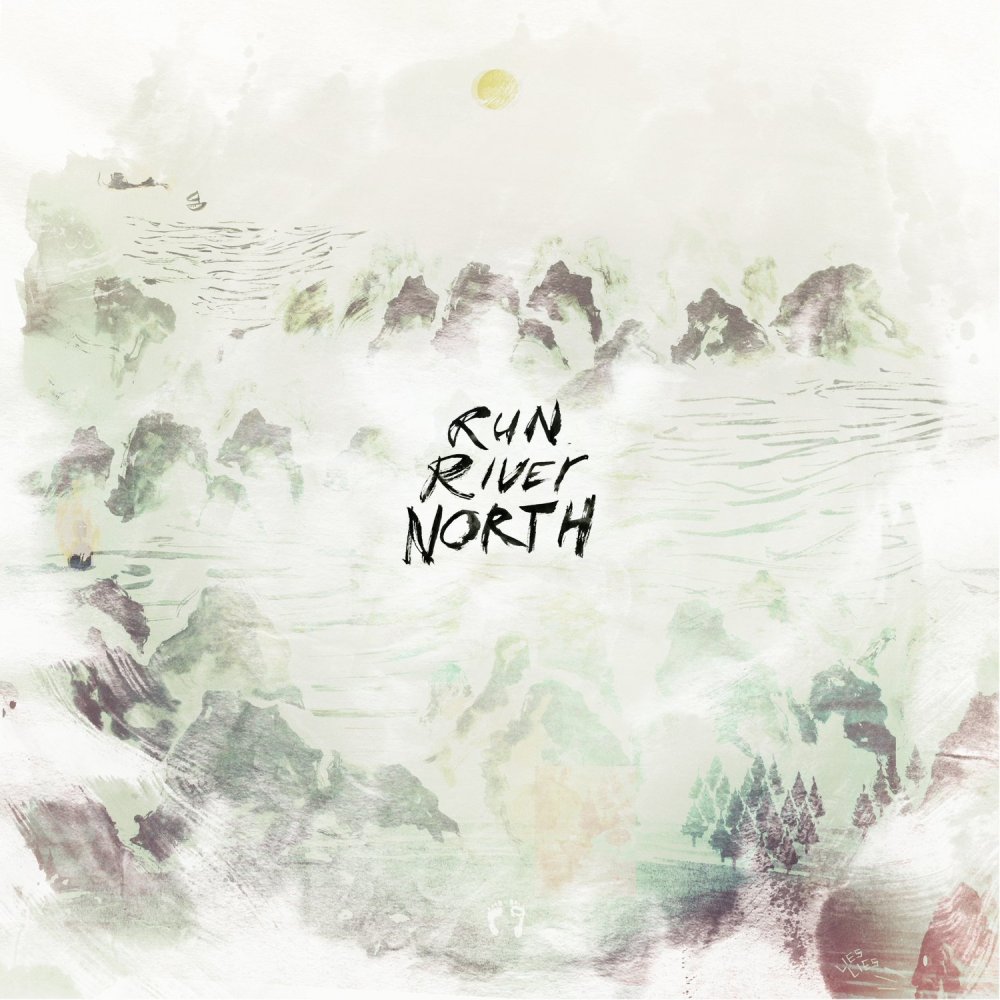
The ever generous Beth Fedyn sent me Run River North and I eagerly listened to it. This six-member ensemble from the San Fernando Valley delivers wonderful, heartfelt, orchestral indie pop. Their folky sound blends with warm harmonies to produce a pleasing self-titled album. If you like The Lumineers you’ll like Run River North. Check out the video below. GRADE: B+
TRACK LIST
1 Monsters Calling Home (4:10)
2 Beetle (4:24)
3 Lying Beast (4:44)
4 Run River Run (3:21)
5 Growing Up (4:03)
6 Fight To Keep (3:40)
7 In The Water (3:30)
8 Somewhere (3:13)
9 Foxbeard (4:23)
10 Excuses (3:22)
11 Banner (4:50)
THE HARD THING ABOUT HARD THINGS By Ben Horowitz

Ben Horowitz is a venture capitalist. But before he was in the position to invest in other companies, he ran his own. Horowitz writes about the difficult decisions every entrepreneur needs to make: who to hire, who to fire (and how), and how to be a leader. The Hard Thing About Hard Things: Building a Business When There Are No Easy Answers shows how Ben Horowitz dealt with problems. The refreshing aspect of this book is Horowitz shows how he made Good Decisions, but he also shows how he made Bad Decisions…and how he learned from his mistakes. I came away with a new appreciation of how difficult it is to succeed in business today. It takes someone like Ben Horowitz with his years of experience to reveal the minefields in running a business. There’s plenty of wisdom in this book. GRADE: B+
TABLE OF CONTENTS
Introduction
Chapter 1: From Communist to Venture Capitalist
Chapter 2: “I Will Survive”
Chapter 3: This Time With Feeling
Chapter 4: When Things Fall Apart
Chapter 5: Take Care of the People, the Products, and the Profits–In That Order
Chapter 6: Concerning the Going Concern
Chapter 7: How to Lead Even When You Don’t Know Where You Are Going
Chapter 8: First Rule of Entrepreneurship: There Are No Rules
Chapter 9: The End of the Begining
THE WILD WILD WEST: THE COMPLETE SERIES

The Wild Wild West: The Complete Series is on sale at AMAZON for 29.99 (retail price $99.99). All four seasons of The Wild Wild West are here on 27 DVDs. Each episode in introduced by Robert Conrad. This quirky western series showed up in 1965 just other western TV series were folding. The Wild Wild West garnered a loyal following who appreciated the wacky plots and surreal characters. If you were a fan of this western series, you can have all the episodes for a pittance! Buy now!
SINGING SCHOOL: LEARNING TO WRITE (AND READ) POETRY BY STUDYING WITH THE MASTERS By Robert Pinsky
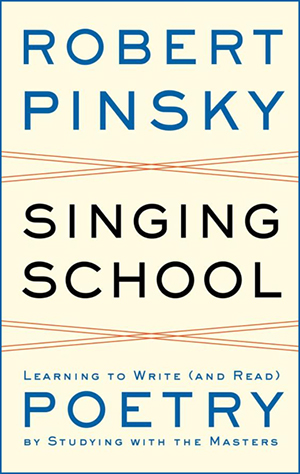
Robert Pinsky’s book might not teach anyone to write (or read) poetry, but it presents an intriguing collection of poems. Pinsky includes one of greatest cat poems ever written, “Jubilate Agno” by Christopher Smart featuring his cat, Jeoffrey. These collections of poetry try to cover all the bases. Plenty of variety, plenty of different styles. After reading Frank O’Hara’s “Why I Am Not a Painter” I want to read more of his poems. Pinsky provides some interesting information on the poets and their poems. If you’re in the mood for an entertaining collection of poetry, Singing School is it. How many of these poets are you familiar with? GRADE: B+
TABLE OF CONTENTS
Preface
I. FREEDOM
Introduction
FRANK O’HARA, “Why I Am Not a Painter”
Michaelangelo, “On Painting the Sistine Chapel Ceiling”
MARIANNE MOORE, “Silence”
ANONYMOUS, “The Old Cloak”
GREGORY CORSO, “Marriage”
EMILY DICKINSON, “Because I Could Not Stop for Death”
STEVIE SMITH, “Thoughts About the Person from Porlock”
WILLIAM CARLOS WILLIAMS, “Fine Work with Pitch and Cooper”
KENNETH KOCH, “Variations on a Theme by William Carlos Williams”
ALAN DUGAN, “How We Heard the Name”
JAMES SHIRLEY, “The Glories of Our Blood and State”
EDWARD THOMAS, “Adlestrop”
ANDREW MARVELL, “Upon Appleton House”
JONATHAN SWIFT, “A Description of the Morning”
APHRA BEHN, “The Disappointment”
GERARD MANLEY HOPKINS, “God’s Grandeur”
JOHN WILMOT, “Upon Nothing”
II. LISTENING
Introduction
WALTER SAVAGE LANDOR, “On Love, on Grief”
GEORGE PEELE, “Betsabe’s Song”
H.D., “The Pool”
EDWIN ARLINGTON ROBINSON, “Eros Turannos”
BEN JONSON, “His Excuse for Loving”
BEN JONSON, “My Picture Left in Scotland”
ROBERT HERRICK, “Upon M. Ben Johnson”
GERARD MANLEY HOPKINS, “For Margaret”
THOMAS CAMPION, “Now Winter Nights Enlarge”
THOM GUNN, “Tamer and Hawk”
MINA LOY, from “Songs to Joannes,” I-III
WILLIAM CARLOS WILLIAMS, “To Waken an Old Lady”
ROBERT FROST, “To Earthward”
ROBERT FROST, “An Old Man’s Winter Night”
WALTER RALEGH, “Nature, That Washed Her Hand in Milk”
WALLACE STEVENS, “The House Was Quiet and the World Was Calm”
WILLIAM BUTLER YEATS, “Adam’s Curse”
EMILY DICKINSON, “The Soul Selects Her Own Society”
III. FORM
Introduction
ANONYMOUS, “The Cruel Mother”
ANONYMOUS, “The Man of Double Deed”
CHIDIOCK TICHBORNE, “My Prime of Youth Is but a Frost of Cares”
SAPPHO, “Artfully Adorned Aphrodite”
WILLIAM CARLOS WILLIAMS, “To a Poor Old Woman”
THOMAS NASHE, “In Time of Plague”
H.D., “Sea Rose”
WILLAIM BLAKE, “A Question Answered”
CHRISTOPHER SMART, from “Jubilate Agno”
FULKE GREVILLE, “Elegy for Philip Sidney”
ALLEN GINSBERG, from “Howl” II
MAY SWENSON, “Question”
LANGSTON HUGHES, “The Negro Speaks of Rivers”
GEORGE GASCOIGNE, “The Lullaby of a Lover”
GEORGE HERBERT, “Church Monuments”
THOMAS HARDY, “During Wind and Rain”
IV. DREAMING THINGS UP
Introduction
ELIZABETH BISHOP, “The Weed”
GEORGE HERBERT, “Love Unknown”
ROBERT SOUTHWELL, “The Burning Babe”
THOMAS HARDY, “The Self-Unseeing”
JOHN CROWE RANSOM, “Captain Carpenter”
JORGE DE LIMA, “The Big Mystical Circus”
ROBERT HERRICK, “The Shooe Tying” and “To God, on His Sicknesse”
WALLACE STEVENS, “Madame La Fleurie”
WILLIAM COWPER, “Epitaph on a Hare”
LOUISE BOGAN, “Women”
STERLING BROWN, “Harlem Happiness”
ELIZABETH I, “When I Was Fair and Young”
WALT WHITMAN, “Vigil Strange I Kept on the Field One Night”
SYLVIA PLATH, “Nick and the Candlestick”
WILLIAM SHAKESPEARE, “The Phoenix and the Turtle”
BIBLE, Samuel 2, “David’s Lament for Saul and Jonathan”
LEWIS CARROLL, “Jabberwocky”
WILLIAM BUTLER YEATS, “The Lake Isle of Innisfree”
EZRA POUND, “The Lake Isle”
EZRA POUND, “The River-Merchant’s Wife: A Letter”
JOHN MILTON, “Methought I saw my late espoused saint”
WILLIAM BUTLER YEATS, from “A Woman Young and Old,” IV: “Her Triumph”
JOHN KEATS, “”Ode to a Nightingale”
MARIANNE MOORE, “Poetry”
JOHN KEATS, “On First Looking into Chapman’s Homer”
Biographies
Acknowledgements
Permissions
Index
THE MENTALIST: SEASON SIX FINALE

CBS just renewed The Mentalist for a seventh season. I wouldn’t have made that decision if I were a CBS executive. Season Six was disappointing as the quirky crime consultant, Patrick Jane (Simon Baker) finally dealt with his nemesis, the serial killer Red John. Then there was a “reboot” as the series shed some characters and added new ones. The setting was shifted from California to Texas. The cases became more serious–not a good thing. I enjoyed the “funny” episodes of The Mentalist the most. When The Mentalist returns in the Fall, I won’t be watching.
GODZILLA
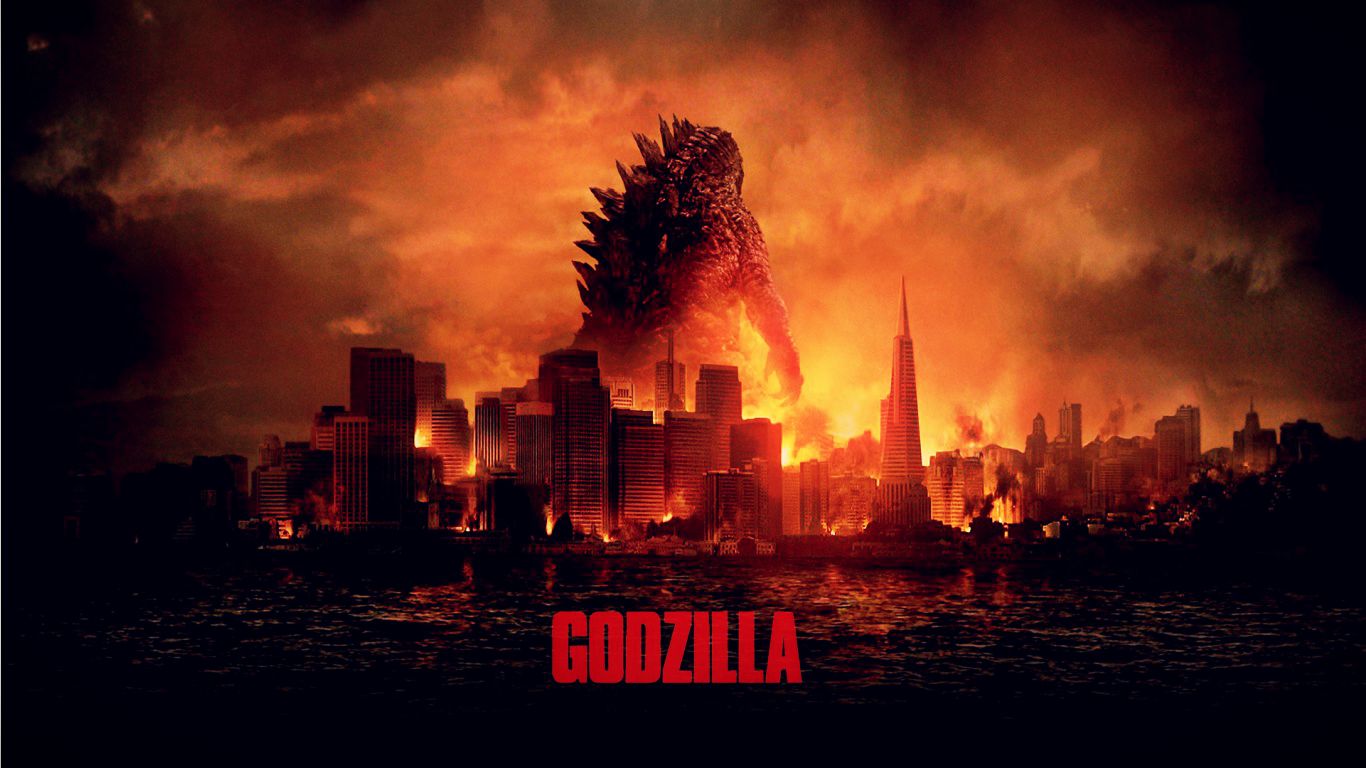
Fans of puny humans scurrying around like ants as giant monsters battle, rejoyce! Godzilla features several epic scenes of mass urban destruction. I would have liked to see more of David Strathairn and Byran Cranston. The talented Juliette Binoche isn’t given much to do. This is not an actors’ movie, it’s a monster movie. Spectacle, explosions, and action are at the forefront of this movie. Movies like Godzilla are metaphors for our fears: global warming turning Miami into Atlantis, climate change that will render much of the southern U.S. unlivable, antibiotic-resistant diseases, terrorists with nukes, etc. But I just ate my popcorn and enjoyed an entertaining Summer Movie. GRADE: B
FORGOTTEN BOOKS #269: Crime Novels: American Noir of the 1950s: The Killer Inside Me / The Talented Mr. Ripley / Pick-up / Down There / The Real Cool Killers Edited by Robert Polito

For this Friday’s Forgotten Books, I decided to go with the Library of America’s volume of American Noir of the 1950s. Jim Thompson’s The Killer Inside Me (1952), Patricia Highsmith’s The Talented Mr. Ripley (1955), Charles Willeford’sPick-Up (1957), David Goodis’ Down There (1956), and Chester Himes’ The Real Cool Killers (1959) surveys the noir crime novels of the Fifties. Jim Thompson’s The Killer Inside Me is a chilling psychological novel. The Talented Mr. Ripley features the amoral Tom Ripley who doesn’t hesitate to kill for things he wants. Charles Williford’s Pick-Up explores the limits of love in San Francisco. David Goodis’ Down There inspired Truffaut’s Shoot the Piano Players. Coffin Ed Johnson and Grave Digger Jones, Harlem detectives, bring their own special brand of nihilistic humor to The Real Cool Killers. There’s a broad range of styles in these noir classics. They are all highly recommended! This is a terrific collection.
CONTAGIOUS: WHY THINGS CATCH ON By Jonah Berger
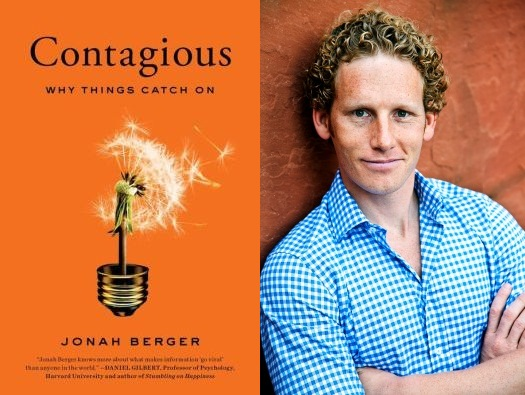
Jonah Berger’s insightful book into the secrets of marketing holds plenty of astute advice for anyone wanting to sell their books, ideas, and products. Berger’s analysis of social media uses to sell products and services makes a lot of sense. Contagious is a book you can dip into and find plenty of information on how to build an audience and provide what they need and want. Jonah Berger supplies plenty of examples of how each technique and approach works. If you want to sell something, start a small business, or entice people to buy more of your “stuff” this book will tell you how to do it. GRADE: B+
TABLE OF CONTENTS
i. Introduction/Synopsis
1. An Introduction to Contagiousness
◾a. If You Want Your Message to Spread, You Need to Get People Talking, and Imitating
◾b. The STEPPS
2. Social Currency
◾a. On the Importance of Appearances
◾b. The Appeal of the Remarkable
◾c. Manufactured Remarkability
i. Snapple
ii. Blendtec
◾d. On the Importance of Status
i. Our Accomplishments
ii. What Distinguishes Us
3. Triggers
◾a. Top of Mind, Tip of Tongue
◾b. Indirect Triggers
◾c. Natural and Artificial Triggers
i. Wassup?
◾d. When Triggers Influence Behavior
i. Mars Bars, and the Planet Mars
ii. The Effect of Music on Wine Sales
iii. Kit Kat and Coffee
◾e. Diluted Triggers
4. Emotion
◾a. Awe
◾b. Sadness
◾c. Positive and Negative Emotions
◾d. Low Arousal and High Arousal Emotions
◾e. Focusing on Emotions
i. The ‘Three Whys’
5. Public
◾a. Monkey See, Monkey Do
◾b. Solving Binge-Drinking at American Universities
◾c. The Movember Movement
◾d. Livestrong and the Yellow Wrist-Band Campaign
6. Practical Value
◾a. What’s Useful Gets Spread
◾b. Giving Advice
7. Stories
◾a. People Love Stories
◾b. Stories in Advertising: Subway
◾c. Valuable Virality
8. Conclusion
NUDE ON THIN ICE/MEMORY OF PASSION By Gil Brewer
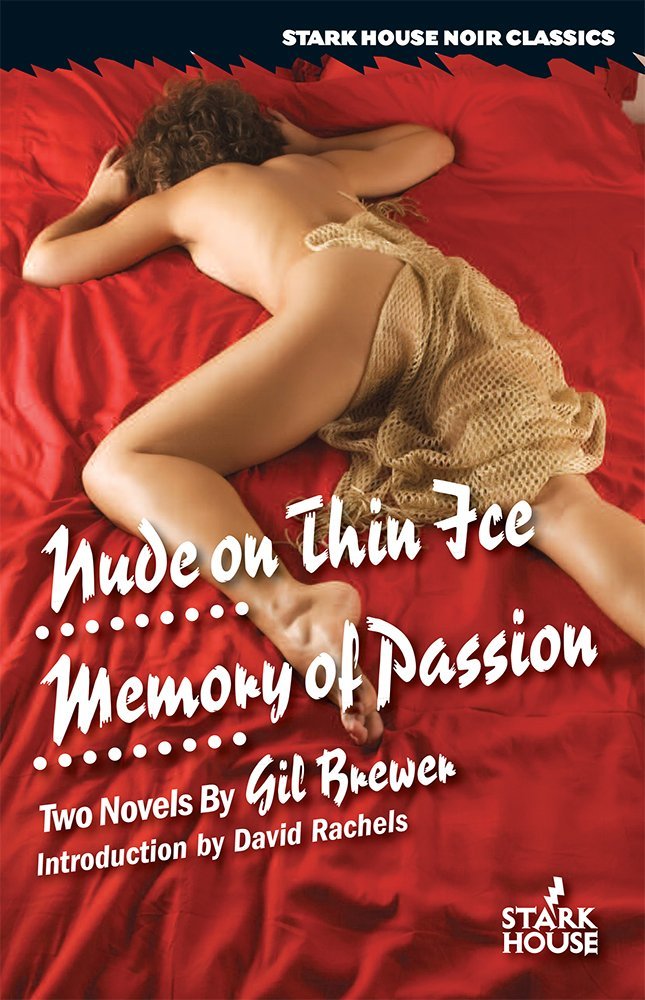
Once again, Stark House deserves praise for returning Nude On Thin Ice and Memory of Passion to print. There’s been a bit of a Gil Brewer revival the past couple of years. I’ve also reviewed Gil Brewer’s short story collection, Redheads Die Quickly here. Nude On Thin Ice is the first Gil Brewer novel I’d ever read (see the original cover artwork below) back in the 1960s. I’ve read many more of Brewer’s novels, some very good and others not so much. Nude On Thin Ice is one of Gil Brewer’s better noir novels. Memory of Passion has a twisty plot and a serial killer. I found David Rachels’ useful Introduction informative. If you’re looking for your noir fix, you’ll find it here. GRADE: B+

